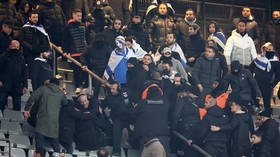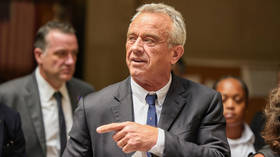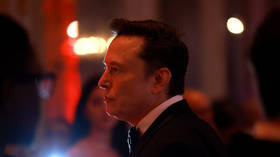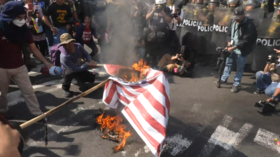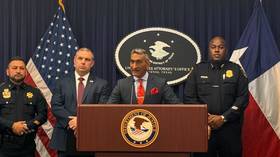Russia’s Central Bank lifts key interest rate to 9.5% to revive roiling ruble
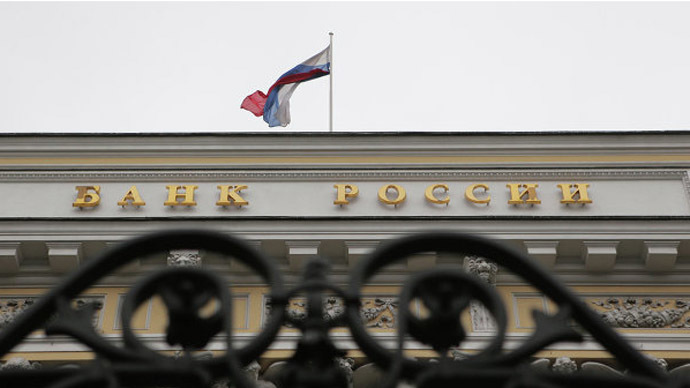
The key lender raised its key rate to 9.5 percent, a 1.5 percent jump from the last increase in July. The bank said the decision greatly weighed on external conditions, such as low oil prices, sanctions, and the weakening ruble, changed “significantly.”
“In September and October, the external conditions have changed significantly: the price of oil sharply dropped amid several individual countries have imposed stricter sanctions on a large number of Russian companies. Under these conditions the ruble is weakening, and the introduction of the import ban on certain foodstuffs in August has led to further acceleration in consumer prices,” the Russian Central Bank (CBR) said in a press release Friday.
The rate went up 150 basis points. The last time the bank increased the rate was in July, when it was hiked 50 basis points to 8 percent. In April, the bank unexpectedly raised its key rate to 7.5 percent.
The key interest rate is a tool central banks uses to balance inflation and economic growth. Inflation significantly increased in Russia to 8.4 percent in September and October, far above the 5.5 percent target. The bank expects inflation will remain above 8 percent through the first quarter of 2015. Although increasing the interest rate can help trim inflation, it also means that loans become more expensive, which can slow down economic growth.
Shortly after the announcement, the ruble appreciated against the dollar and euro. The ruble traded at 41.48 per US dollar at 13:30. Since the beginning of 2014, the Russian ruble has lost more than 25 percent against the dollar.
On Thursday evening in anticipation to the bank’s rate hike the ruble gained 5.1 percent, the highest jump since 2003.
READ MORE: 6 useful things you need to know about the rapid descent of the Russian ruble
Although increasing the interest rate can help trim inflation, it also means that loans become more expensive, which can slow down economic growth.
In September Russia’s GDP growth accelerated to 1.1 percent which marked an economic revival from the flat growth last year.
Challenges to the Russian economy
Central Bank chairwoman Elvira Nabiullina said three external challenges had led the bank to raise its interest rates; oil prices, the weak ruble, and sanctions against Russia.
Low oil prices threaten the Russian economy, as revenue from oil and gas exports account for more than half of the country’s budget. The Kremlin's 2015 draft budget assumes Russia's key export blend, Urals, at $100 per barrel. WTI, the main North American blend, and Brent, European, have both lost more than 20 percent in value since the summer peak price of $116. Prices hit a four-year low in mid-October. WTI is trading at $80.44 per barrel, and Brent at $85.30 per barrel at 3:00pm MSK on Friday.
READ MORE: Oil prices won’t recover above $100 – Russian Finance Ministry
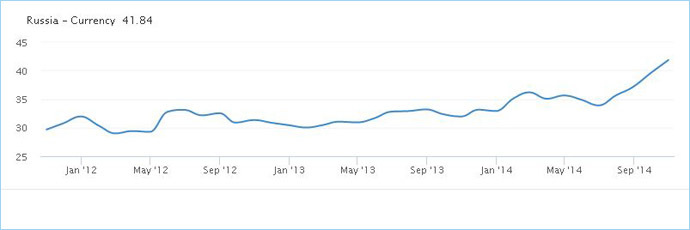
One bonus of the weak ruble is that it act as a buffer to lower oil prices, since costs are in rubles, but revenue in dollars.
The Kremlin’s response to Western sanctions, a one-year food import ban, has added 1.3 percent to inflation, and weakened the ruble, according to the Central Bank.
The Russian Central Bank has the world's third largest foreign currency reserves, which stand at just over $439 billion, a four-year low. The Ukraine crisis and massive capital outflow have forced the bank to spend over $60 billion to prop up the ruble this year, and $28 billion just in October.
Last week, the Central Bank announced it was going to start a $50 billion repurchase agreement exercise, which will allow it to balance the Russian ruble, but will not use reserve currencies. The bank hopes to abandon its intervention strategy and have the ruble free floating next year.



